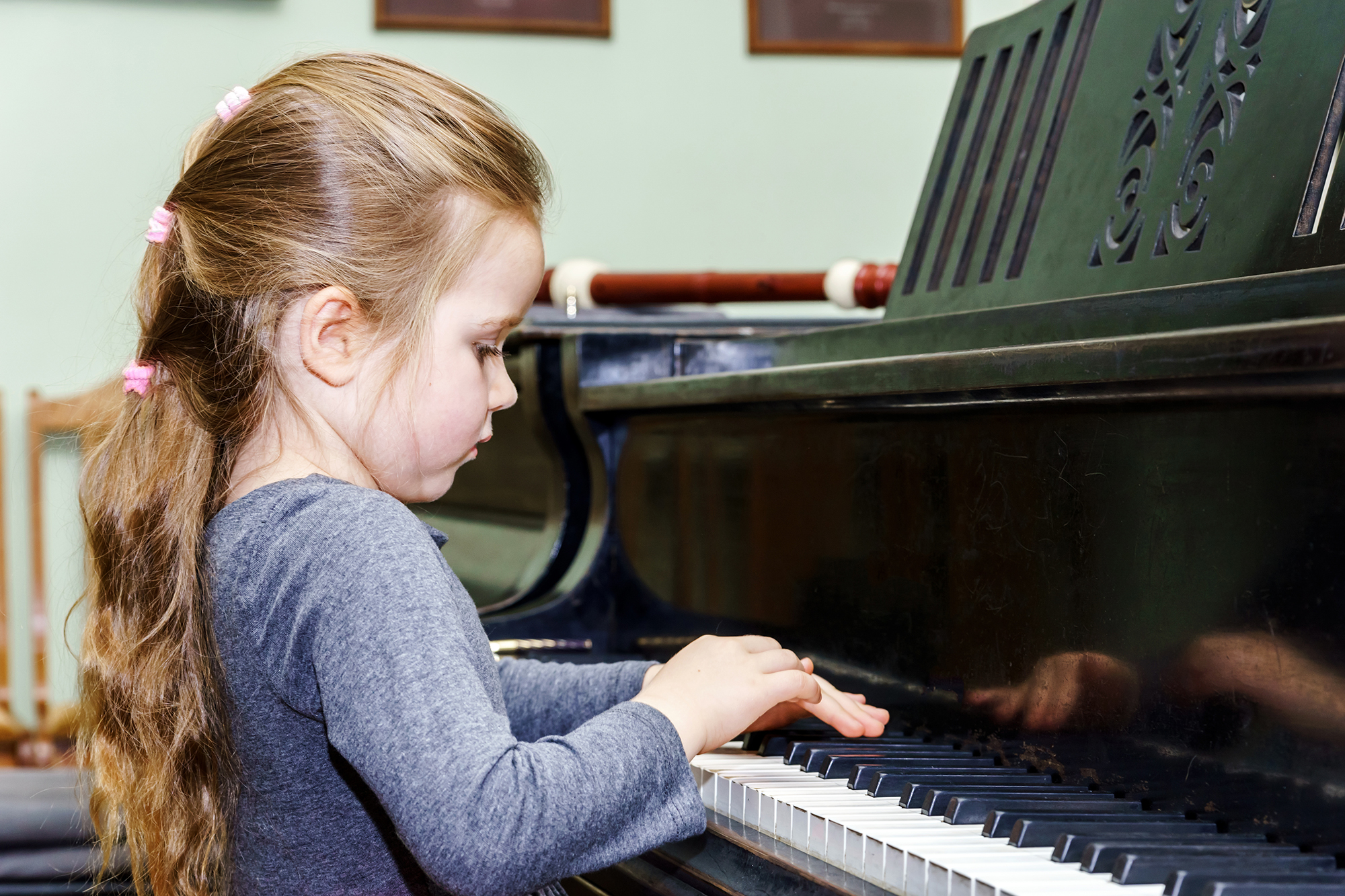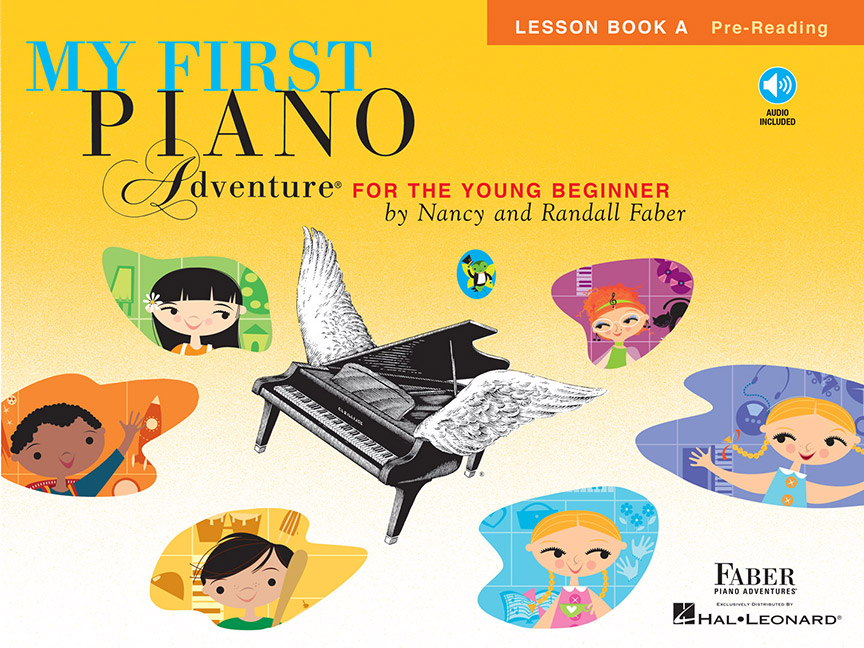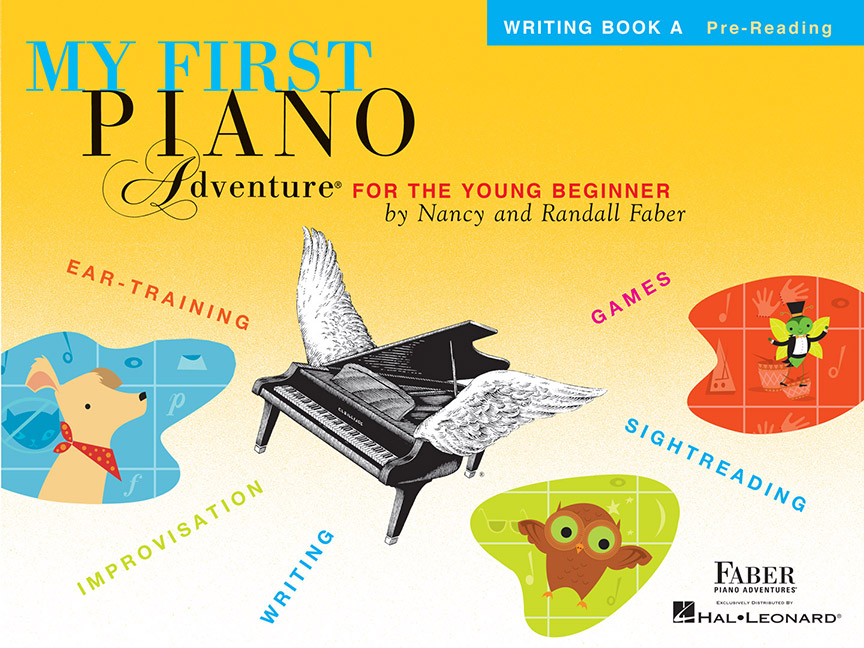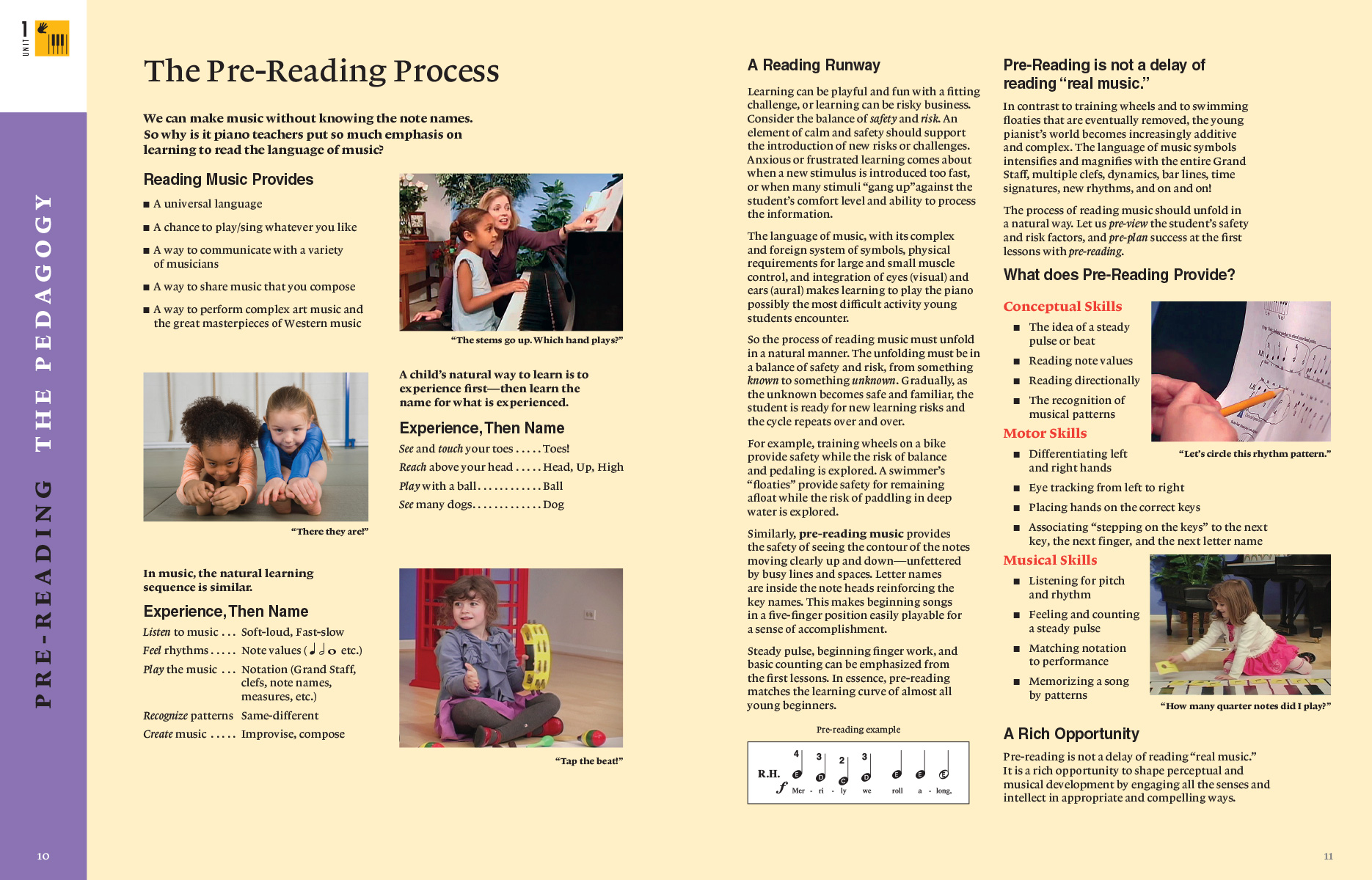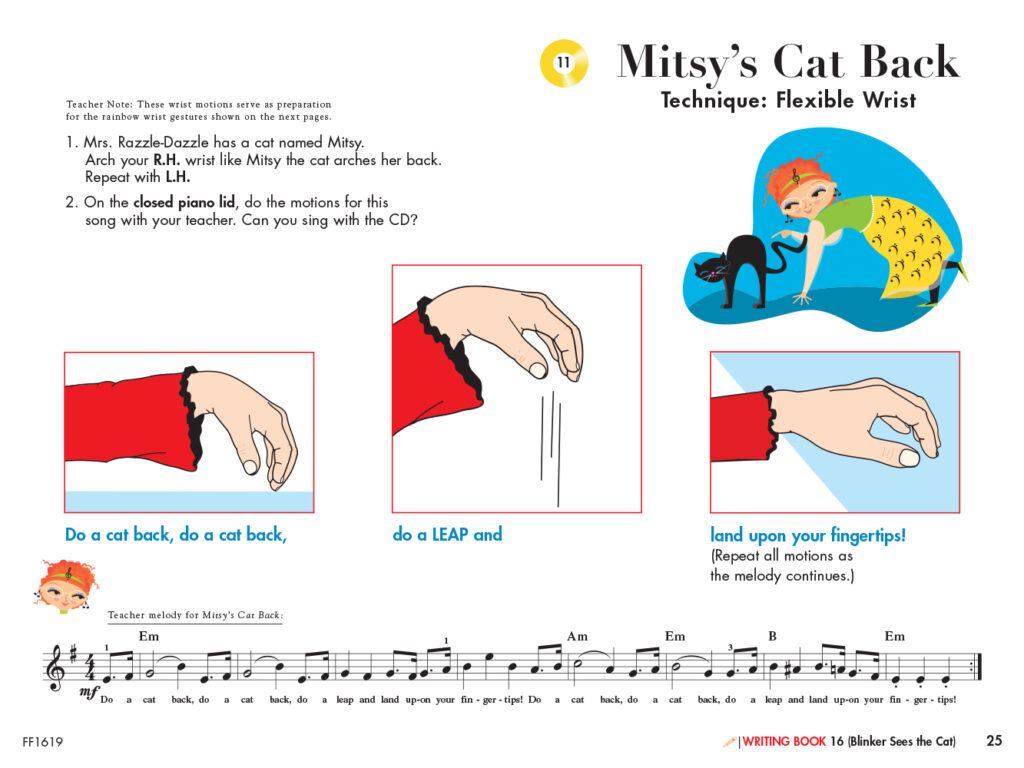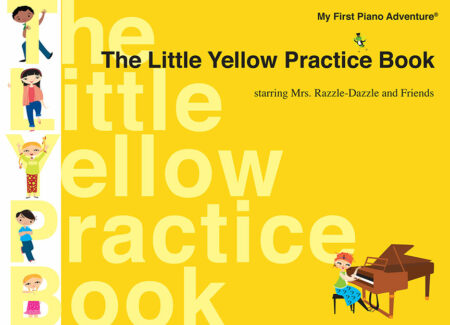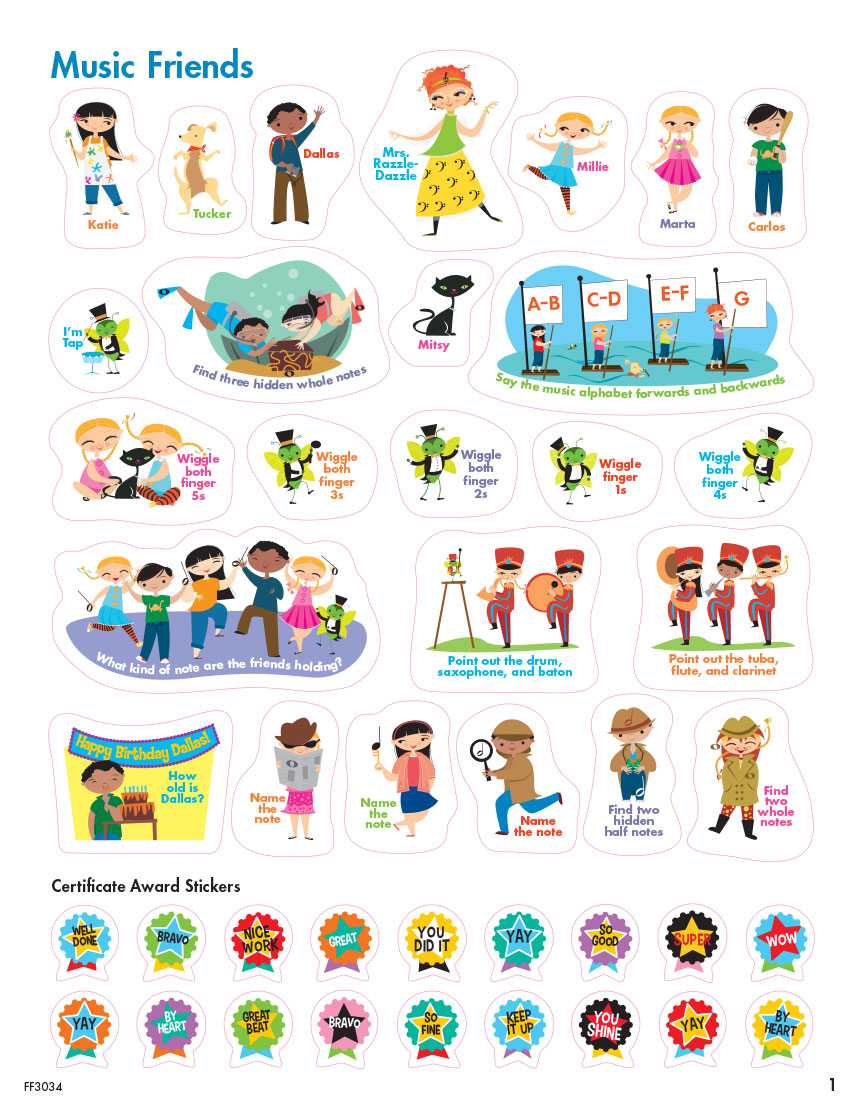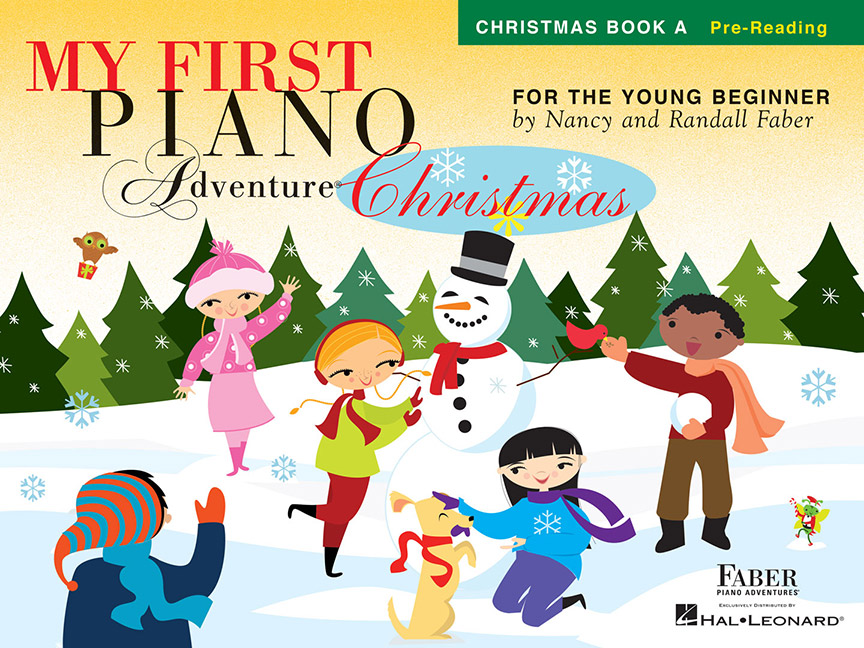14. What are support items for My First Piano Adventures?
Teachers can enjoy these support items for lively learning at lessons.
Printable Friends Posters are a free download to decorate your studio. The 10 posters present the five friends: Carlos, Dallas, Katie, Millie, Marta, and their teacher, Mrs. Razzle-Dazzle. The set also includes Tap (the music firefly), Blinker the owl (seeing), and Tucker the dog (listening).
“My First” Flashcard Sheets, for private and group lessons, have the goal to “read with ease.” The 10 laminated sheets cover Books A, B, and C, and correlate by unit to each Lesson Book. Each sheet shows a colorful 16-box grid with notes, symbols, and terms. Answers are printed on the back. Directions for a variety of fun games are included. (See below.)
Celebrate progress with the My First Piano Adventure Sticker Book containing over 400 “stickers that teach.” Each sticker has a question that offers a quick, mini review of rhythm, reading, terms, or technique. Also included are dozens of award stickers specially designed for the final certificate page in Lesson Books A, B, and C. As students complete each piece, they can build their own certificate, sticker by sticker, celebrating each step of their musical journey.


